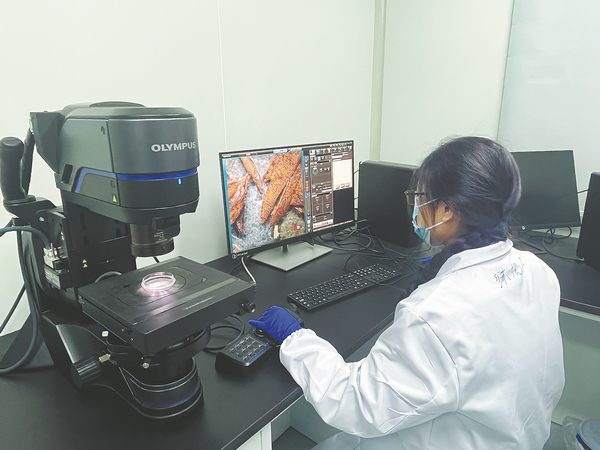

The team was able to identify the gender of 52 individuals, 42 of whom were male or presumed male. Among the 79 that could be identified by age, 15 were underage — the youngest was a 1-year-old — 45 were aged between 15 and 35, 15 were between 36 and 55, and four were elderly.
As to who the elderly, women and children were, Wen says that further isotopic analysis and DNA identification work they are carrying out might be able to confirm whether they were noncombat army personnel, or villagers that the soldiers failed in trying to help escape the battle.
Wen explains that strontium isotopes will identify whether the bodies belong to local residents or outsiders, while carbon and nitrogen isotopes reveal information about lifestyle and nutritional status. Facial reconstruction based on cranial computed tomography will also be performed on 35 well-preserved skulls.
For the past nine years, the team has built a DNA database of around 1,200 national heroes who sacrificed their lives for the country and its people.
This effort paid off when they managed to help Shanxi retiree Cui Yuqi fulfill his late father's wish of finding his brother who died during the War of Liberation in 1947 at the age of 23 in Lyuliang, Shanxi province.
Based on records and interviews with villagers, local officials speculated that the brother, who was called Cui Haizhi, was likely buried in a martyrs' cemetery in Nancun village in Fangshan county because the cemetery was located near a wartime hospital and was used to bury those who could not be saved.
In January of last year, accompanied by four young scholars and 11 students, Wen excavated the cemetery and unearthed 49 bodies, as well as belongings such as buttons, enamel bowls, iron spoons, pipes, jade seals and bullets. The remains were properly reburied later.
The team extracted the skeletons and cleaned them on-site, collecting physical anthropological information before conducting lab tests to establish a DNA archive, confirming the gender and age of the martyrs, traumas and illnesses suffered during their lifetimes, and clues about their personal lives. The results were made public at an exhibition at Fudan last September.
Wen says that the work was very emotional.
The martyrs' average age was 20.5, with the youngest not even 14. Many showed traces of wounds or of suffering from degenerative joint diseases at a very young age. Five had undergone amputations, with the cut marks and evidence of infection indicating that the amputations were performed under rudimentary conditions.